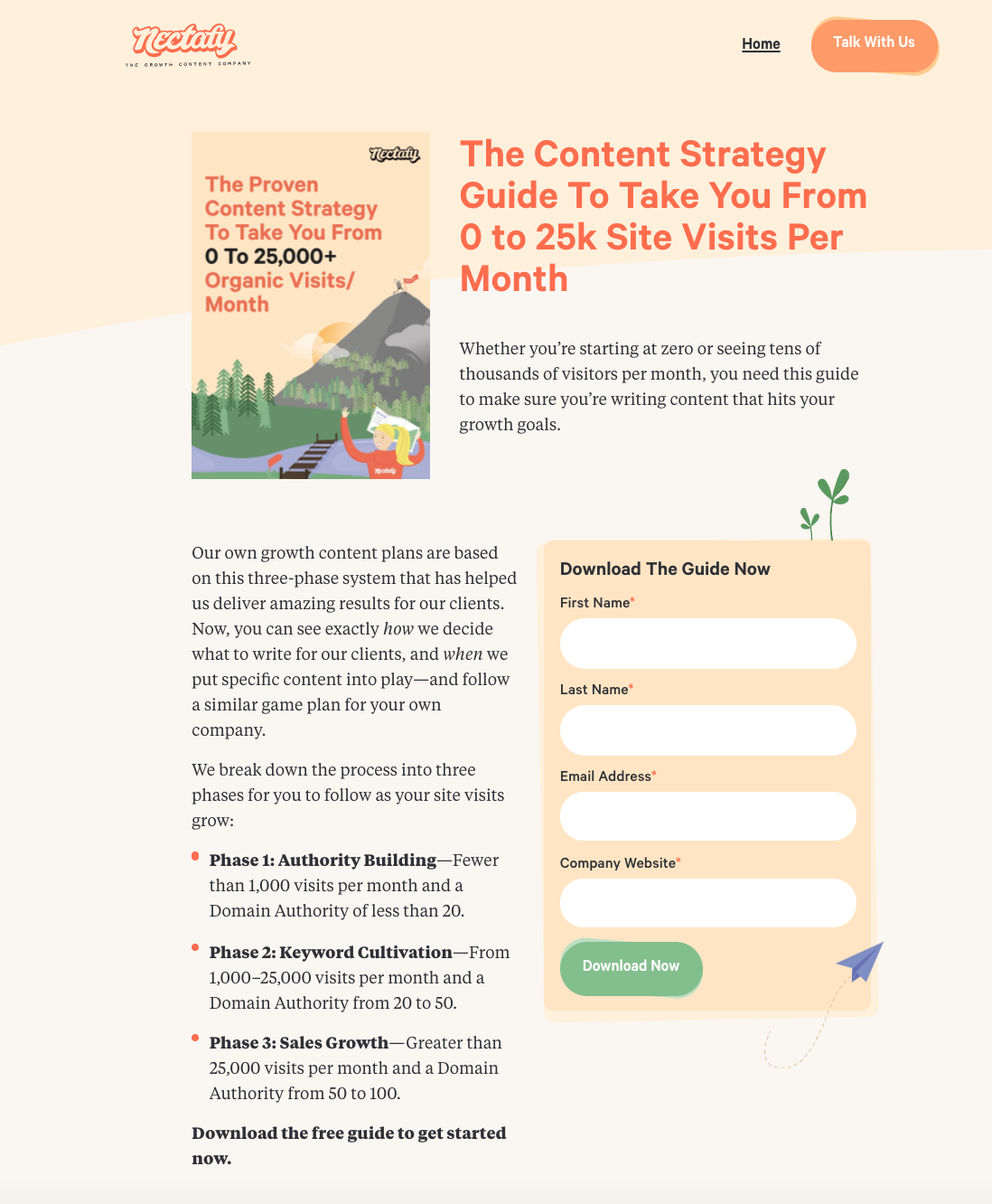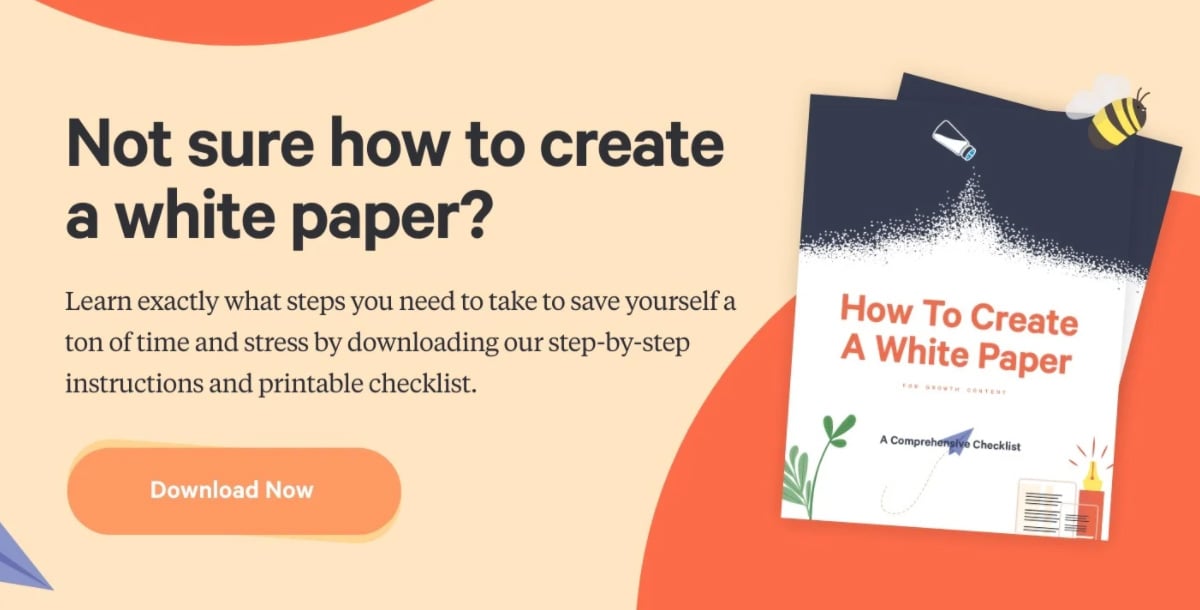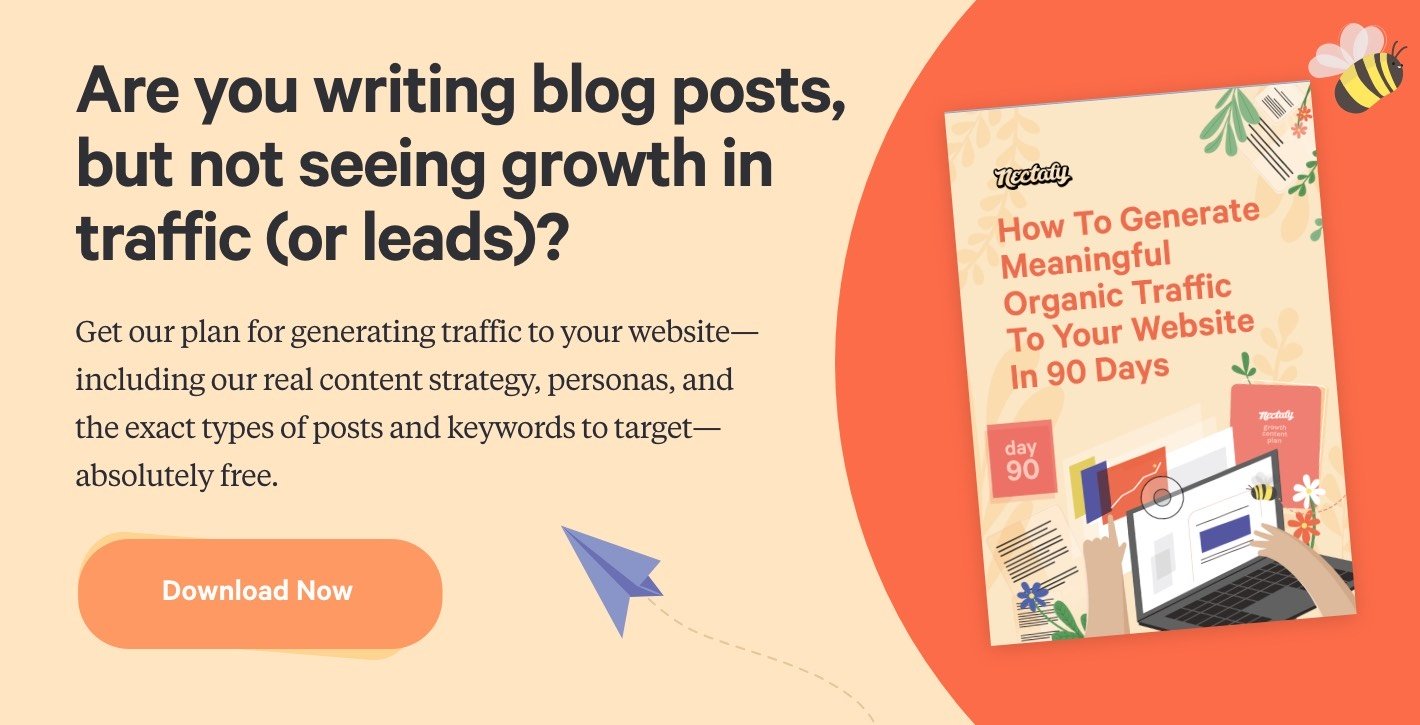The Power Of Gated Content For B2B SaaS Websites


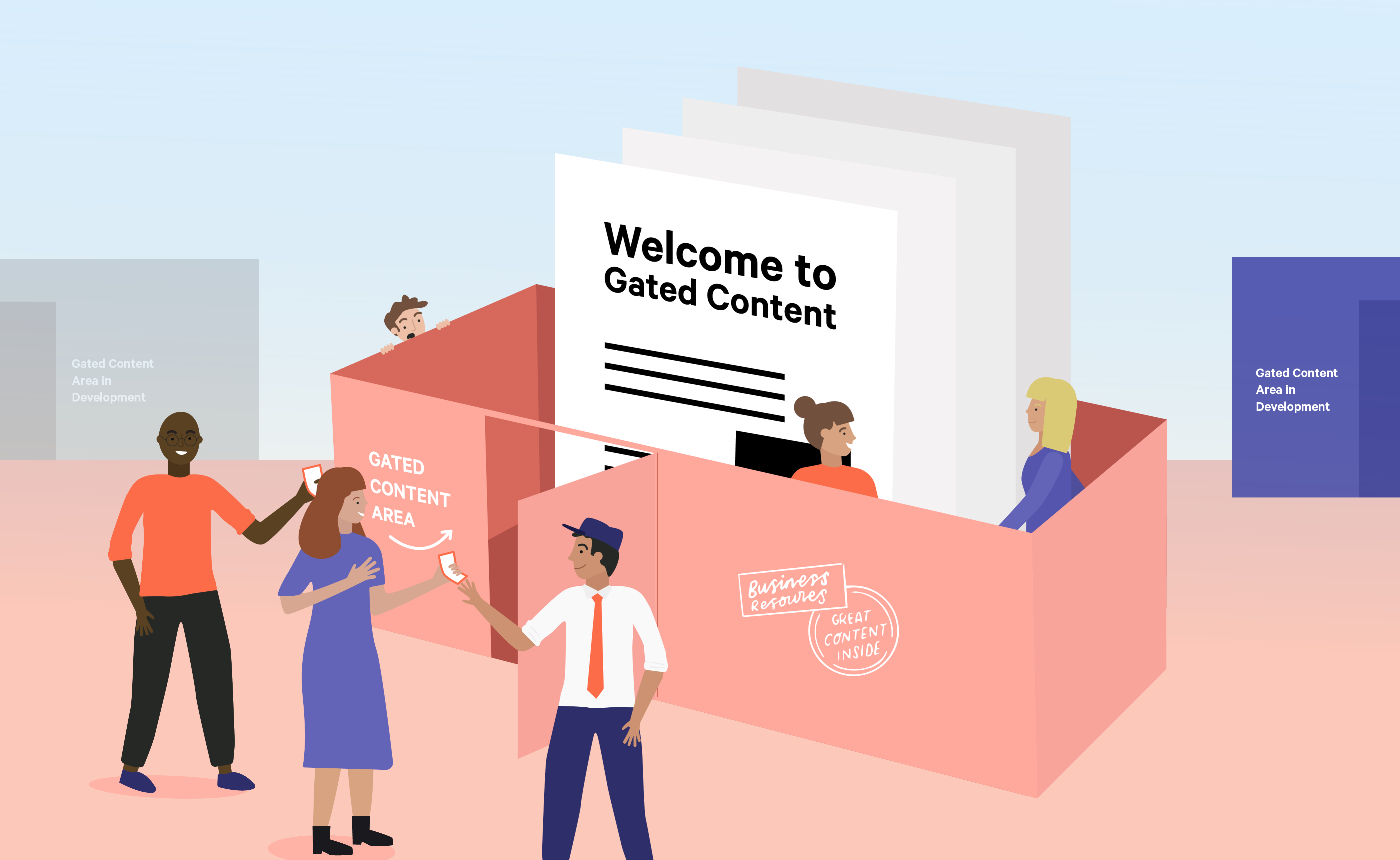
Getting regular traffic to your B2B SaaS website but still finding it hard to generate leads?
Consider producing gated content.
If you’re unfamiliar with this term, let me give you a quick definition:
Gated content is content shared only with users who submit contact information on your website.
Here at Nectafy, we also refer to this type of content as inbound marketing offers.
Tomato, tomahto.
Usually, gated content is original content specifically created with the goal of enticing website visitors into submitting their contact information so they can access it (like a white paper, E-book, template, etc.).
But here’s the thing: Gated content can also come from content that’s currently on your website.
In this post, I’ll show you how we helped one of our clients create a top-performing piece of gated content using existing content from their website.
I’ll also explain how you can identify this type of content on your own site, and the process for gating it.
So let’s get into it.
Gated Content Statistics: The Results
Earlier this year, we gated an informative chart found on one of our client’s older blog posts with the hope that the content was worthwhile enough to drive lead submissions.
And after four full months, here’s what we found:
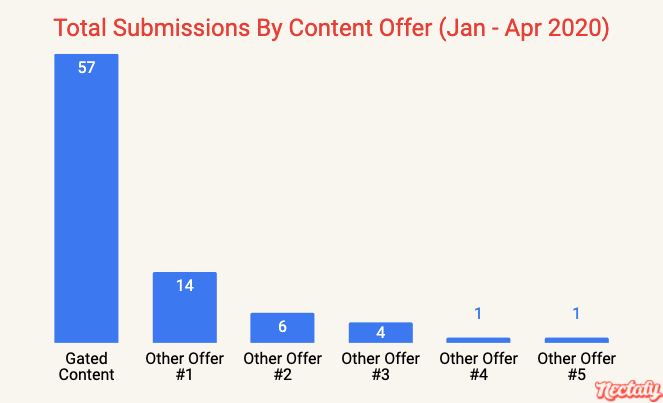
Our informative chart gated content is now the top-performing lead generator on our client’s website across the board!
Total submissions? #1.
New contacts created? #1.
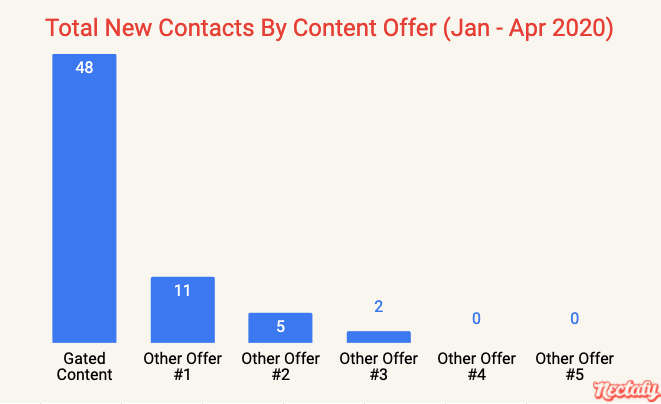
Average view to lead rate? #1.
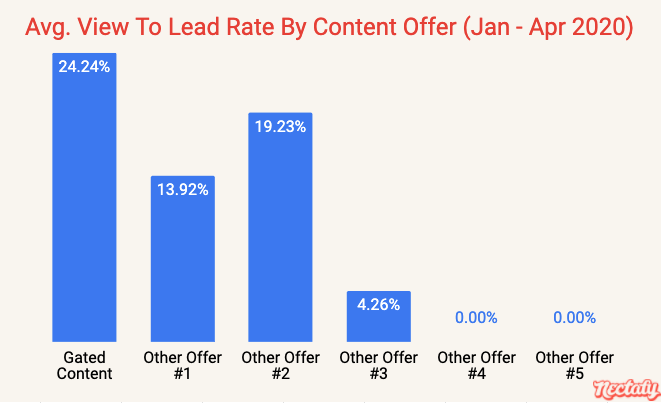
It even has the lowest bounce rate compared to our other pieces of gated content.
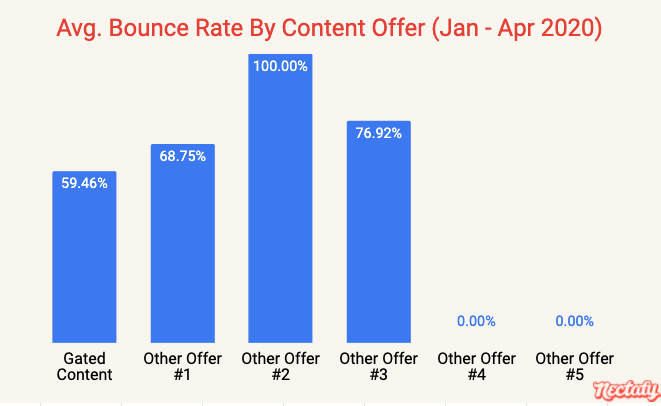
Now you’re probably thinking, “Wowzers, Matt, that’s some totally tubular data you got right there. But how did you do it?”
To which I would reply: Update your slang and read the next section.
How To Gate Content
There’s more than one approach to gating content on one’s website, but here’s how our team did it:
Step 1: Identify helpful information currently on your website.
With this step, you’ll want to find out where your website visitors are congregating the most throughout your website and where they’re spending the most time.
Once you find these pages, try to look for any helpful charts, displays of data, or any other helpful information that you think could be useful as gated content.
For us, we knew the informative chart on our client’s website would be perfect for gating since it featured helpful state-by-state compliance information for their industry.
If you’re having trouble locating this type of content on your website, try the following:
Find Website Pages With Highest “Time Per Pageview”
Like my Nana always used to say, “When in doubt, check the Time Per Pageview.”

If you’re searching for content that would be worthwhile to gate, you should be looking toward content that actually keeps your visitors on the page.
Review the pages with the highest time per pageview and see if there’s anything on those pages that might be worth testing as gated content—charts, images, data, etc.
Use A Heat Map
Another way you can understand how visitors are interacting with your website content is by using a heat map like Hotjar or Crazy Egg.
Heat maps highlight the specific locations on each page where visitors are looking the most/least. If you notice a particular section of content or an image that’s getting more view time than others, then you might be looking at a potential piece of gated content.
Step 2: Make a gated version of the helpful information.
Once you’ve identified your helpful information, the next step will consist of transposing a copy of it into a gated version.
For us, this consisted of making a copy of our client’s informative chart, adding some introductory content above the chart to help provide additional context, and formatting it all into an easy-to-read PDF file with the help of our graphic designer.
Step 3: Create a new landing page introducing the gated content.
Now that you’ve created your gated content, it’s time to create the actual gate.
To do this, you’ll need to create a new landing page that showcases your gated content. It should feature a contact submission form where visitors can submit their contact information in order to access the content.
Try to aim for something like the screenshot below.
Or you can try and create something entirely different. The world is your oyster!
If you’re looking for some inspiration on designing your landing page, check out our blog post where we break down 30 B2B Landing Page Examples.
Also, you need to employ some form of logic for the page that allows visitors to access the gated content once they’ve submitted their contact information. This could be sending them a follow-up email with the content attached to it, taking them to a “Thank You” page where they can download the pdf directly, or a combination of both (which is what we typically do).
Either way, focus on making the transaction as seamless as possible.
Step 4: Replace existing helpful information with a link to the gated content landing page.
Next, you’ll want to swap out the helpful information you identified in Step 1 with a link to the landing page you created in Step 3.
This is what’s known as a Call To Action (CTA).
Typically, you want this CTA to stand out from the rest of the content on your page to entice more visitors to click it.
See the screenshot below for an example of an effective gated content CTA.
Step 5: Analyze the results.
For the final step, you’ll want to analyze the performance of your gated content. Wait a few months before doing a deep dive into the data so you have more data points to properly validate your conclusion. How long you wait will obviously depend on the amount of traffic coming to your website on a monthly basis, but you should at least wait a couple of months before determining initial results.
Here are three key questions to use for your analysis:
- How many leads has the gated content generated?
- Is there any noticeable decline on the original page where the helpful information was found? (Look at trends for pageviews, time per pageview, & bounce rate.)
- From questions 1 & 2, which gains/losses are more important for your overall website goals?
Here’s how our analysis went:
Question 1: How many leads has the gated content generated?
So far this year, our informative chart gated content has generated nearly 50 new leads for our client.

That’s four times more than their next best-performing piece of gated content, which only brought in 11 new leads during the same period.
Question 2: Is there any noticeable decline from the original page?
Chances are if you change something from a page on your website, you’re going to notice some effect with the way Google ranks your content and how visitors interact with it.
To help with answering this question, we looked at a few key metrics around the original page where the gated content was housed.
First, we looked at the monthly trend of the page’s organic pageviews for the last eight months.
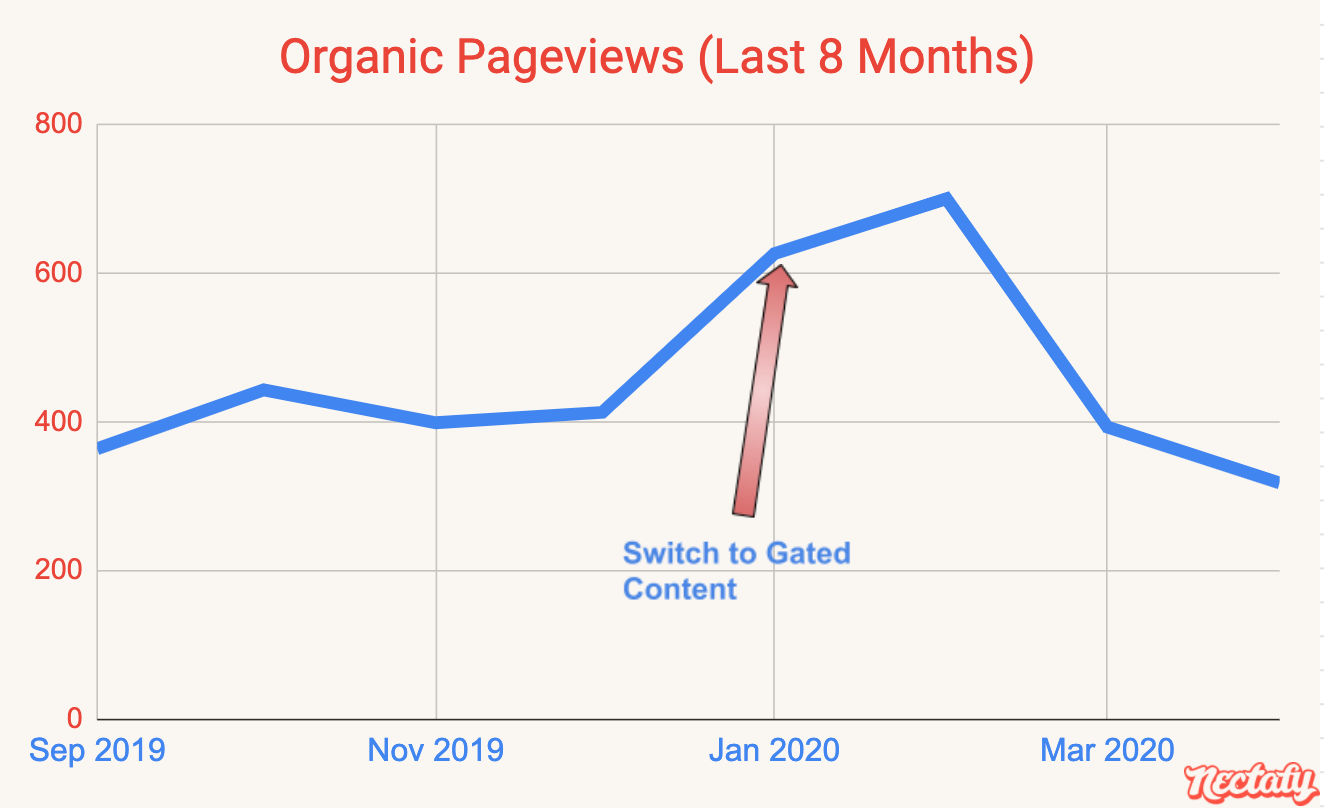
Since gating the content earlier this year we have noticed a decrease in monthly organic pageviews.
(Note that we also have to take this dip in pageviews with a grain of salt due to everything that’s happened this year with COVID-19; there were noticeable shifts in search traffic occurring in March for this client’s keywords overall.)
For our next set of data, we looked at the monthly trend of the page’s average time per pageview since it was first published. This has also decreased slightly since making our gated content change.
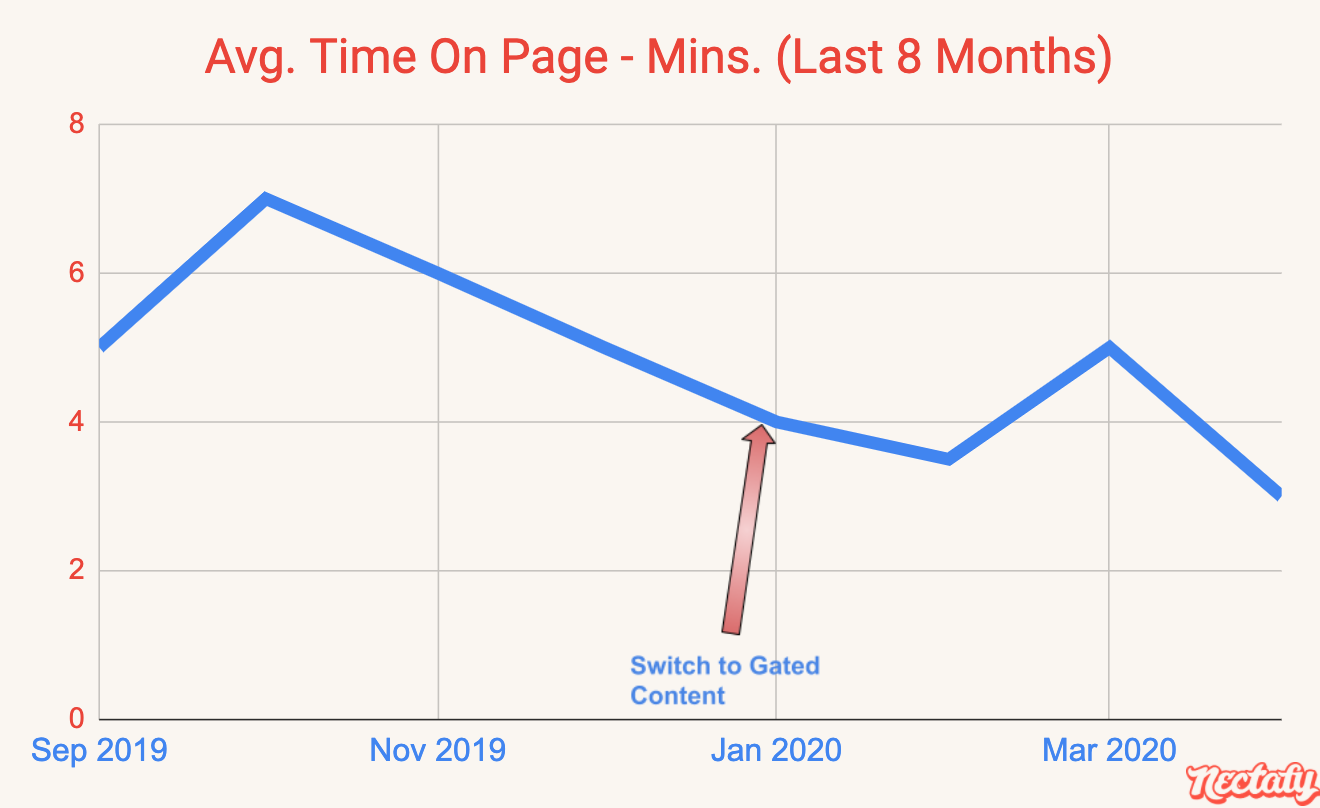
Finally, we took a look at the monthly trend of the page’s bounce rate since it was first published. With this, we actually saw a slight improvement in our bounce rate since gating our content.
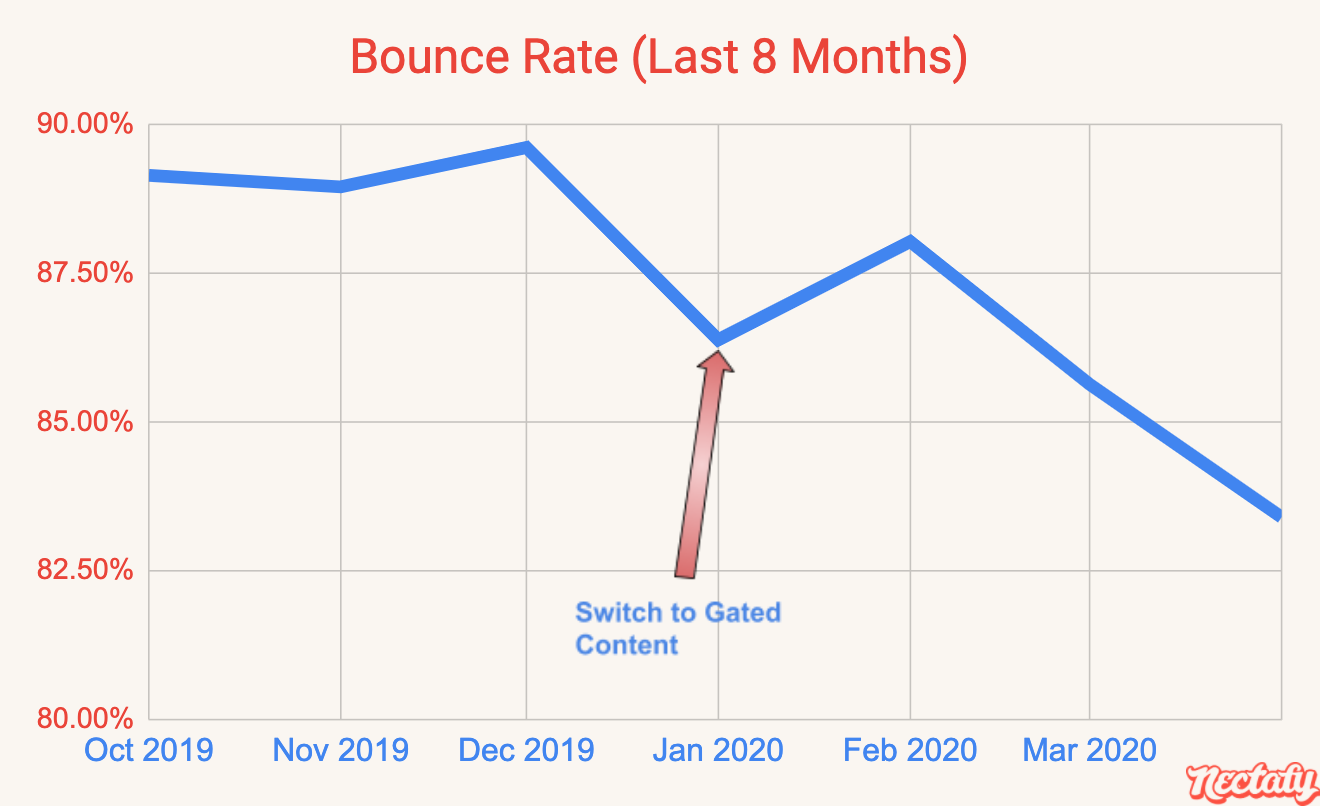
Question 3: Which gains/losses are more important for your overall website goals?
To answer this question, compare your responses from the first two questions and decide which results are more important for your website.
We asked our client if they would rather have more traffic from that original page we took our gated content from, or if they would rather have more lead submissions.
They responded with an emphatic response of “MORE LEADS,” which helped us answer this question and conclude that we should keep our gated content machine up and running.
Is your website generating leads?
Before you get into A/B testing gated content, you may want to take a step back and look at your website performance at a higher level. Analyze your website for these seven metrics to find areas to improve.
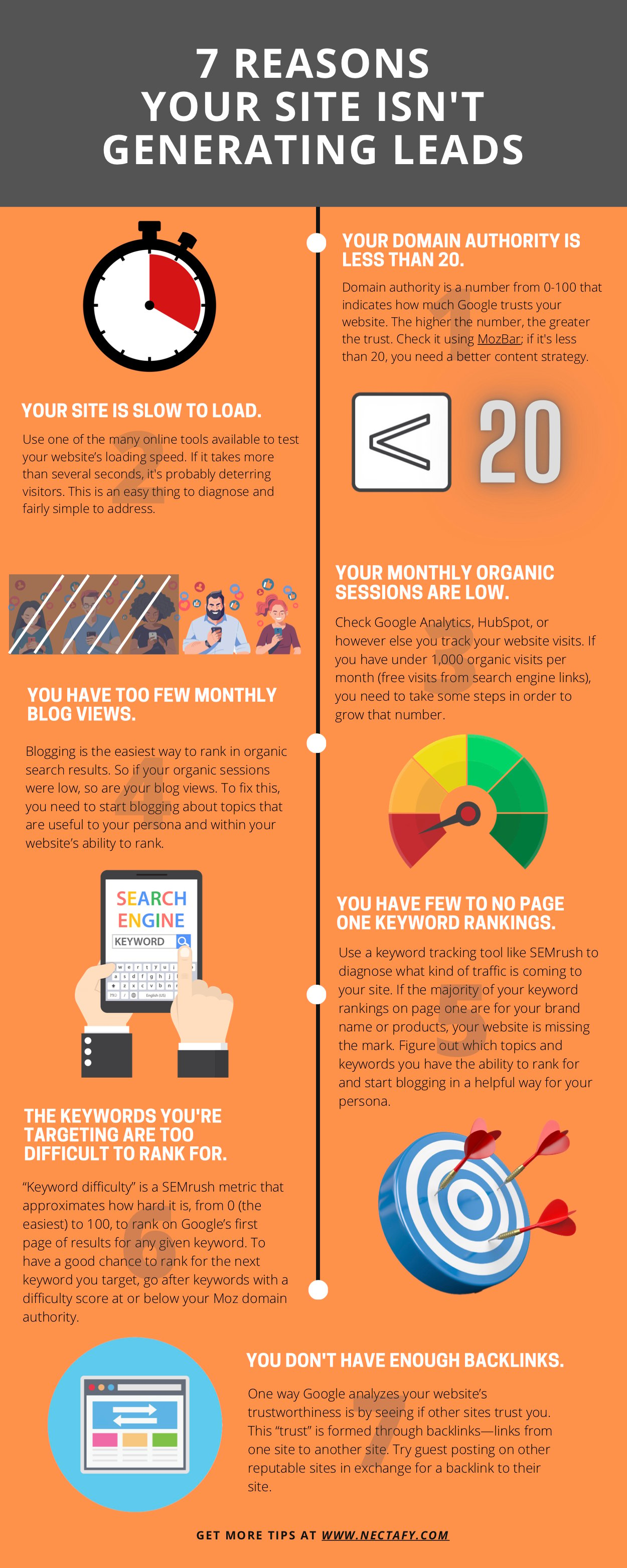
Conclusion
Even though we were seeing some noticeable declines from the original page, the positive amount of leads we’re able to generate with this gated content outweighed these slight negatives. But every website has its own set of goals and objectives.
So if you go through this gated content process and find yourself in a similar situation, just ask yourself the following question: “What’s most important for my website right now?”
As long as you’re moving in a direction that aligns with your overall website goals, you’re moving in the right direction.
Not sure about your overall website goals or need help with your content marketing strategy in general? Check out our Growth Content Case Study where we show step-by-step how we helped one of our clients generate $1.1 million in sales revenue.
Or, you can request a free discussion with Lance, our founder, to see how growth content can fit into your marketing strategy.
And last but not least, make sure to leave a comment below! Is there anything I missed mentioning? Are you looking at gated content in a different way after reading this? Are there any other glib slang words you think I should incorporate in my next post?

